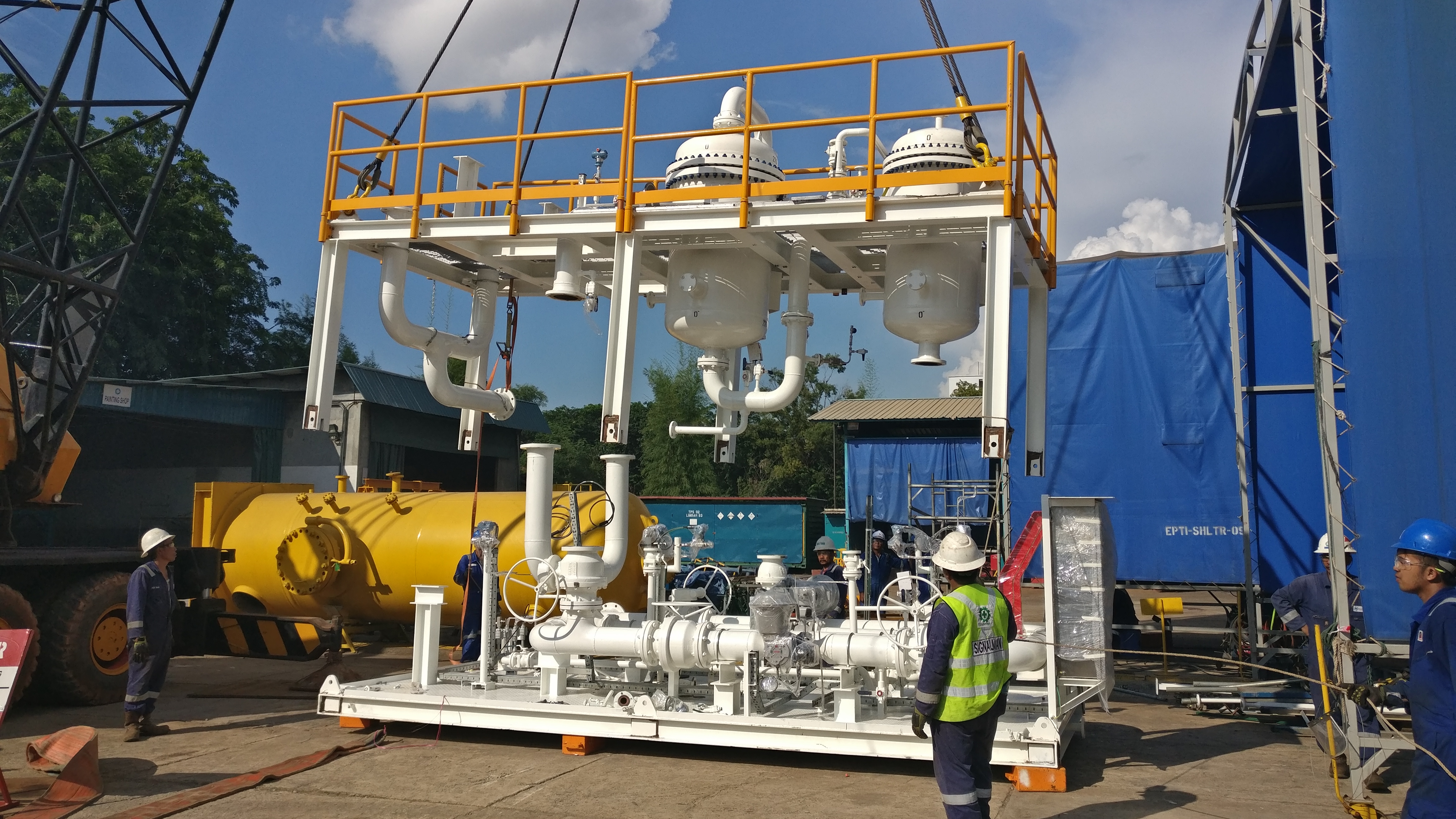Customer challenges
- Plans for producing new wells (to maintain oil production) exacerbated a water bottleneck problem - the MOPU equipment was operating at full capacity (with oil production decreasing due to an increasing water cut)
- In a mature oil basin, the ability to sustain oil production depends on managing an increasing volume of produced water as water cut increases
Expro Excellence
- To remediate the increased water, Expro proposed ExH2O modular bulkwater removal system
- Personnel mobilised offshore with a field test unit to carry out field trials and evaluate the suitability of the technology, during which result met all the client's targets, resulting in Expro being commissioned with the engineering, fabrication and supply of dedicated 33,000 bpd ExH2O package
- Hydraulic and performance data obtained during the trials was used for designing the main components of the package, which was fabricated in-house at Batam Island (Indonesia) within 14 weeks
- The equipment was retrofit onto the existing platform - due to the deck space and crane limitations, the package footprint had to be designed so that it could be disassembled and reassembled offshore, installed over two separate crane lifts
- Over 70% of the water was separated and treated at the source, before entering the production separator
Value to client
- Able to debottleneck their existing topside separation equipment, creating additional capacity to allow increased oil production by approximately 500 bpd
- Reduction in chemicals resulting in the cost and environmental savings: by separating and treating 70% of the water using the ExH2O on the MOPU (rather than the FSO), lower quantities of demulsifiers were required
- Fuel costs reduced: a cost reduction in pump power was realised (transferring non-separated water from the MOPU to the FSO and back from the FSO to the MOPU for injection)
- Instant increase of 10% oil production post-commissioning, simply by reducing the back pressure on the electrical submersible pumps (ESP) wells
- Lowering the back pressure also decreased fuel consumption



